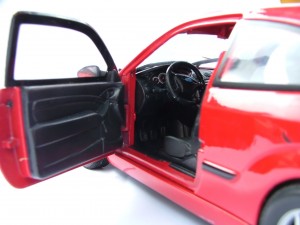5 Tips for Finding Cheap Full Coverage Auto Insurance
Although adding full coverage to a basic auto insurance policy will raise your premium, there are steps you can take to keep it affordable. To get cheap full coverage insurance you will need to examine your coverage options, your driving habits, and make some difficult choices.
Start with your ZIP in the box and you’ll get FREE quotes for car insurance here!
If you have a car loan, you are required by your lender to carry full coverage insurance, and not just liability. Even if your car is paid off, it’s often a good idea financially to keep the coverage on the car. Read on to understand what full coverage refers to and to learn five tips to finding the best deal on this protection.
Full Coverage Auto Insurance
Technically, there’s really no such thing as full coverage for any vehicle. When most people refer to full coverage insurance, they mean that, on top of the state mandated liability coverage, the policy also includes comprehensive and collision.
Collision is the part of your auto insurance policy which pays to repair your car if you cause a traffic accident. Comprehensive covers damage done to the car by events other than traffic accidents. This would include hail damage or theft.
However, the term full coverage insurance is a bit misleading. This makes it sound like it covers everything that could happen to your car. It doesn’t.

There are several different parts, or sections, to an auto insurance policy. The most important is liability coverage, which is mandated by the state. This part pays for damages you cause another driver, his car, or his passengers in an accident.
The amounts required by the states are quite low, and won’t always cover the damages you could cause in an accident. For instance, in Ohio you are only required to carry $12,500 bodily injury liability person with a cap of $25,000 per accident. The property damage liability required is only $7,500.
 If you were to have an accident with an expensive SUV or sports car, the damages might easily exceed these amounts. Someone in ICU for several days would use up that $12,500 very quickly. And, if the car is totaled, $7,500 will not replace an expensive car.
If you were to have an accident with an expensive SUV or sports car, the damages might easily exceed these amounts. Someone in ICU for several days would use up that $12,500 very quickly. And, if the car is totaled, $7,500 will not replace an expensive car.
If this were to happen, you would have to pay the difference between what the damages cost and what the insurance pays.
Financial and insurance industry experts like those at the Insurance Information Institute suggest raising your liability levels to the 100/300/50 mark.
So, many people would not consider you to have full coverage insurance unless you had liability levels high enough to protect your assets in case of a bad accident, PIP to cover your medical expenses, and comprehensive and collision.
Before looking for full coverage insurance, you need to decide how much insurance you need. Knowing what levels you need to protect you and your family from financial disaster in case of a traffic accident will save you time and money once you start looking for policies.
Tip #1: Shop Around
The first tip is to shop around. Auto insurance companies will gladly give you quotes with no obligation on your part.
While many things are regulated about the insurance industry, the way they compute their premiums is not. Each company is free to set its own guidelines and formulas for how they calculate their charges. Some might look more at your driving record than anything else, while others consider your age and gender to be the most important factor. The point is that no two companies will charge you the same amount for the same level of coverage.
The smartest thing to do is to get several quotes before deciding which policy to go with. Get quotes from large nationally recognized companies as well as local providers. Once you’ve done this, you’ll be in a better position to decide which one offers the best deal.
Tip #2: Raise Your Deductible
 Perhaps the easiest way to save money on full coverage auto insurance is to raise your deductible.
Perhaps the easiest way to save money on full coverage auto insurance is to raise your deductible.
Comprehensive and collision both have a deductible that you must pay before the insurance will pay for the remainder of the repair bill. Or, if the car is totaled, you’ll be paid the actual cash value of the vehicle with the amount of the deductible subtracted from that.
If your car worth $10,000 is totaled and your deductible is $250, your insurance company will pay you $9,750.
However, setting your deductible at $250 can cost you a lot of money in higher monthly premiums. The more you agree to pay towards the repair, the less the company will charge you. Typical deductible levels for auto insurance are $250, $500, and $1,000.
MSNBC reports that raising your deductible to $1,000 can save you up to 40% on your premiums.
If your current premium is $100 a month, raising the deductible could bring it down to around $60 a month.
The news network also recommends setting aside that $1,000 into a special savings account to be used only for this purpose. This way you can enjoy the savings while still being able to afford the repairs.
Tip #3: Combine Policies
Auto insurance is not the only kind of insurance people buy. If you own a home, you have to have insurance on that as well. Even if you rent, it’s a smart idea to have renter’s insurance. This covers your belongings – furniture, clothes, and electronics – in case of fire or theft. Many people also need life insurance, especially if they have children.
Many insurance companies sell more types of insurance than just auto. If you buy your home and auto insurance from the same company, that company will almost always give you what’s called a multi-policy discount.
Not only will bundling your policies save you money on your car insurance, but the Federal Citizen Information Center says you can save up to 15% on your homeowners insurance this way as well.
Many insurance companies that insure cars will insure just about anything with a motor. So if you have a motorcycle, boat, recreational vehicle, jet skis, or an off road vehicle, get quotes from companies that will insure all of them. You’ll save money by having them with the same company rather than having the policies scattered across several companies.
Tip #4: Ask About Discounts
Insurance companies offer many discounts. This is usually done to reward behavior that brings down the amount of risk you present to the company. Take the time to go over all available discounts with the agent or company representative to make sure you are given every one you are eligible for. You might be surprised at how much these can chip away from your cost.
 If you have not had a ticket or accident in the last three to five years, ask if you are being given a good driver or safe driver discount. If you weren’t receiving it in the past because of an accident or ticket, keep checking to make sure they give you credit for it as soon as it goes off your record. How long this takes varies by state and offense.
If you have not had a ticket or accident in the last three to five years, ask if you are being given a good driver or safe driver discount. If you weren’t receiving it in the past because of an accident or ticket, keep checking to make sure they give you credit for it as soon as it goes off your record. How long this takes varies by state and offense.
Young adult drivers are some of the most expensive to insure. If you have a driver under 25 on the policy, ask about a good student discount. Most companies will give you a discount if the student maintains at least a B average. This is because studies have found that responsible students usually make for responsible drivers.
Ask about payment discounts.
Sometimes your premium will be reduced if you can pay for the entire six to twelve months of premiums in full.
Some companies even charge you an extra fee if you pay it out each month. However, if you agree to allow the company to electronically withdraw the payment each month, they might waive this fee and even give you a discount for it. Even going paperless – meaning getting your bill via email – can often get you a discount.
If you haven’t taken a defensive driving course in the past year, you can take one quite inexpensively online and receive a nice discount for it. This is only a few of the available discounts. Ask about any others that might be available.
Tip #5: Get the Right Car
Some cars are more expensive to insure than other cars. If you own one of the more expensive ones, don’t expect to pay rock bottom prices for insurance. In order to get the cheapest full coverage auto insurance, you need to have the right kind of car.

Collision and Comprehensive pay for repairs to your car if you cause the accident. It will also pay to replace the car if it’s totaled. So the cost of these policies is based on the value of the car. If the car is very expensive, then it will cost a lot to replace. It might even be more expensive to repair as it could have specialty parts that cost more. Thus any expensive car will result in higher premiums.
Also high performance and sports cars of any kind are more expensive to insure. Since these vehicles were built for speed, and speed to an insurance company means risk, these vehicles cost more in insurance as well.
One thing to remember: Almost all two door cars are considered sports cars and will cost more to insure.
So the cheapest cars to insure are going to be older cars whose values are lower. There are many guides online that can help you see which cars are the least expensive to insure if you are shopping for a new car.
 Whether you’re looking for a new or used car, keep in mind that safety features are important. Not only will they keep you safe, but things like advanced air bags and anti-lock brakes can earn you even more discounts off your insurance. For more information of safety features to look for on a car, visit Consumer Reports.
Whether you’re looking for a new or used car, keep in mind that safety features are important. Not only will they keep you safe, but things like advanced air bags and anti-lock brakes can earn you even more discounts off your insurance. For more information of safety features to look for on a car, visit Consumer Reports.
Start shopping around for FREE auto insurance quotes just by typing your ZIP into the box!
